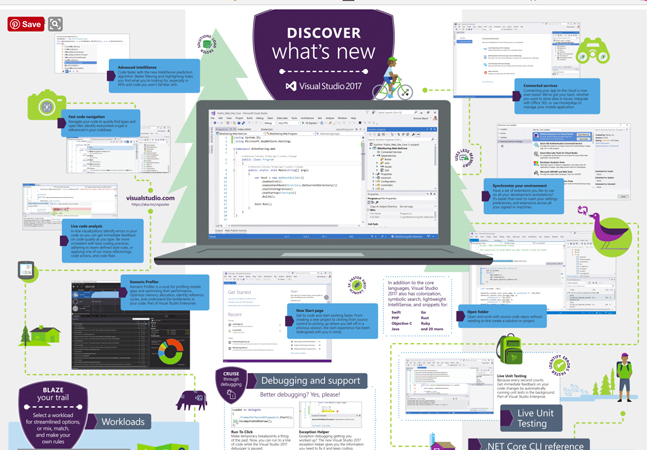
The Entity Framework DbEntityEntry object lets you do all sorts of things you probably didn't think were possible, including getting the latest data from the database (without losing your current data) and invoking the .NET Framework validation subsystem.

If you're passing an anonymous object to an HtmlHelper method (to ActionLink, for example), you might want to consider using that anonymous object to eliminate one of the other parameters.

No longer a pipe dream, cross-platform coding has been made fairly straightforward and nearly ordinary with tools from Xamarin and others. At VSLive!, Microsoft's James Montemagno demonstrated the ease with which cross-platform apps can be delivered without venturing too far from the C# space.

Let's use this classical statistics technique -- and some R, of course -- to get to some of the latent variables hiding in your data.
- By James McCaffrey
- 03/16/2017

Nifty, printable info graphic shows everything new and updated in the latest developer suite.
- By Michael Domingo
- 03/15/2017

.NET developers now have another option for the streamlined creation of cloud apps, now that Google App Engine has announced support for the Microsoft developer stack.
- By Michael Domingo
- 03/14/2017

If you're not using the Entity Framework DbCollectionEntry object when working with an entity class's related objects, then your application is running too slow. Using DbCollectionEntry lets you asynchronously retrieve related objects and get only the objects you want.

If, after pressing F5, you've ever found yourself adjusting the size of your browser window, then this tip is for you. But you shouldn't be surprised if it doesn't work.

Version 2.0 of the business process development tool comes in builds for .NET Core and Java, and sports streamlined UI improvements and a number of new methods.
- By Michael Domingo
- 03/10/2017

Visual Studio Team Services team are in the midst of rolling out yet another sprint, this one with additional Delivery plans features, a more optimized mobile work item experience, and some other Team features.
- By Michael Domingo
- 03/09/2017

We just covered background information on our last file processing foray. Now, what's faster: CRT, Windows API, or something else?
- By Bartlomiej Filipek
- 03/06/2017

With Visual Studio 2017 making its debut next week, a number of software and services that comprise its tooling ecosystem have already embedded support for the development platform.
- By Michael Domingo
- 03/02/2017

Entity Framework Core doesn't have lazy loading (at least, not yet). But you can fake it by using explicit loading, though it doesn't work quite the way you might want. In fact, it's probably a good idea to use this in Entity Framework 6.

If you want to ensure that the right code is loaded at the right time (and only loaded when you need it), you can use TypeScript code to organize your code into modules. As a side benefit, managing your script tags will get considerably easier.

Imagine platform-neutral, language-agnostic tools for writing code. Awesome, yes, but using tools like Visual Studio Code to compose your programmatic masterpiece will require a bit of rethinking.